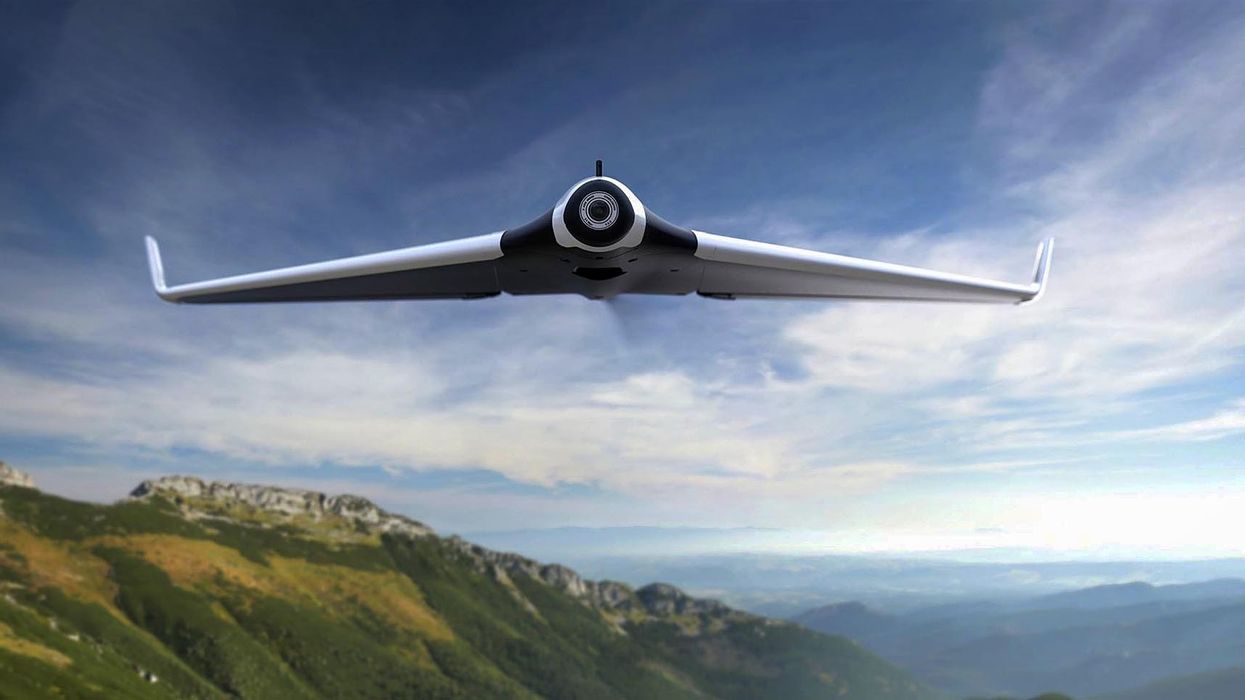Boogie in the Sky with the DISCO Fixed Wing from Parrot
Fixed wing designs have long been a feature of military drones, and now Parrot has released a consumer version.

Parrot, best known for its line of Zik stylish headphones, is getting deep into the drone universe. The company announced the DISCO line back at CES and it is finally about to hit the street.
Outside of the consumer and film world, most drones—and most aircraft in general—are the fixed wing design and not rotary wing (helicopters, quadcopters, etc.), for the simple reason that they can offer higher speeds for less power usage. With a rotary wing aircraft, there is no "coasting"; the wing has to constantly rotate to keep the craft in the air, burning battery or gasoline. A fixed wing aircraft is getting lift from its wings and thrust from the propeller, which allows for a longer flight time.
With its current design, the DISCO is unlikely to be the only drone you bring to set, except for very specific projects.
We see those same benefits in the DISCO, which boasts a 45-minute flight time between battery swaps and an official top speed of 50 mph. Drone top speeds are notoriously hard to predict ahead of time; the DJI Phantom, for instance, can officially fly around 35 mph in normal mode or 45 mph in "sport" mode, which turns off some of the image stability controls if you need a faster shot and don't mind a little camera shake. But some users have been getting speeds up to 60 mph with a fast tailwind pushing the quadcopter along.

Without further testing, we won't know how fast a peak speed you can actually get out of the DISCO, but it stands to reason that with a strong tailwind (and perhaps a slight dive for an assist from gravity), the DISCO ought to break even that 60 mph speed, which could open up some shots not previously possible, perhaps in shooting an action sequence or shooting a nature sequence. (Cheetahs can hit 75 mph, for instance.)
The biggest drawback in the DISCO launch is the front-facing camera.
The stability afforded by the wing should also allow the DISCO to fly in slightly rougher weather than a quadcopter, but any real rough weather should be avoided. Additionally, there might be some benefits to the longer flight time that will appeal to users frustrated by the typical 20-minute time for most drones, such as if you are covering a time-limited event and don't want to land the drone to change batteries.
Parrot has designed a new interface for controlling the drone, COCKPITGLASSES, which provides an immersive first-person view of what the drone sees in the air. This seems like it could potentially be great for situations in which the DISCO is far above you.
But frankly, for a film set, most drone operators are going to prefer the more familiar "remote with a stand to hold your iPad" that provides both a big screen to view the drone itself and the ability to look up at the drone and see obstacles outside the field of view of the camera. However, if working with as a two-person team (a pilot and a spotter), the head-mounted display could prove a useful tool.

The biggest drawback in the DISCO launch is the front-facing camera. While there are obvious benefits from an aerodynamic and efficiency point of view, until we have an underslung stabilized camera that can point down and pan and tilt around—perhaps even lowering down to point backwards below the propeller—the film set applications are going to be limited.
I could imagine a multi-drone package covering a race like the Baja 1000 where a few DISCOs make it into the corral as chase vehicles with the front-facing camera, but you'll want more traditional quadcopters capable of flying one way and shooting another to go ahead of the racers and look back. With its current design, the DISCO is unlikely to be the only drone you bring to set, except for very specific projects.
I will say this: while I might wait until an upgraded DISCO version to buy, I cannot wait to get my hands on one to race it against a quadcopter. Shipping begins early September for $13,00.
DISCO tech specs
- Size: 1150 mm x 580mm x 120 mm
- Wingspan : 1150 mm (45 in)
- 750gr | 26oz
- EPP foam and carbon tube
- Motor 1280kv
- Servomoteur 5V
- RF Receiver ready SBUS, SUMD, CPPM
- Built-in GPS : GPS + GLONASS
- 1080p Full HD camera
- Streaming video : 360p / 720p
- Linux & Open source SDK for App development
- Ultrasound sensor, altimeter, and airspeed sensor (pitot tube)
- 3 axis gyroscope, accelerometer, and magnetometer
- Dual core Cortex A9 CPU
- Internal Flash Memory: 32GB
- WiFi AC-type, 2 bi-band antennas (2,4 and 5GHz)
- Up to 2km with Parrot SKYCONTROLLER or SKYCONTROLLER 2
- 2700 mAh / 25A 3 cells Lipo Battery
- Battery life: 45 min
Skycontroller 2
- Weight: 500g
- Dimensions: 200 x 180 x 110mm
- 2 joysticks
- 8 shortcut buttons
- Battery Li-Po: 2700mAh
- Battery life: 240 minutes
- USB plug
- WiFi MIMO antennas
COCKPITGLASSES
- Weight: 390g
- FOV: 90°
- Compatible with smartphones with screen sizes from 4.7″ to 5.7″ and a thickness from 6mm to 9.5mm
















